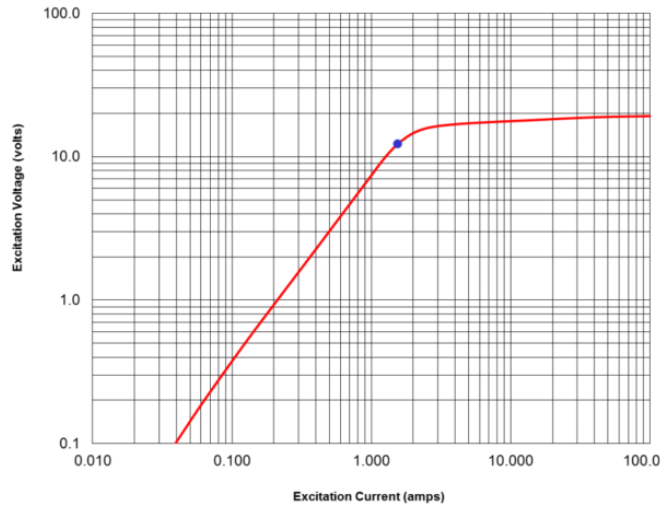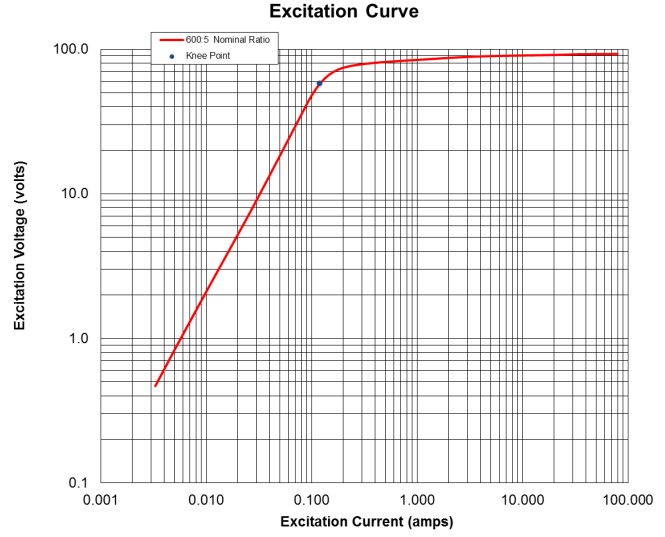Current Transformer Saturation - Weikewei - Comes with Professional User Manual
The purpose of a current transformer (CT) is to generate an accurate copy of a current waveform, whose amplitude decreases proportionally to the number of turns. Except for entering saturation state, CT is a very reliable and accurate device in most cases.
How does the current transformer saturate?
A current transformer with a given iron core size can only support the maximum magnetic flux density of a given number of iron cores. As long as the magnetic flux density (the iron core magnetic flux generated by the CT primary current) remains below the maximum magnetic flux target value, the change in magnetic flux will generate a ratio current in the secondary circuit.
When the primary current is too high for the magnetic core to handle more flux, the CT will saturate. In a saturated state, the magnetic flux does not change when the primary current changes (because the magnetic core has already carried the maximum magnetic flux). Due to the absence of magnetic flux changes, there is no secondary current flowing. In other words, in a saturated state, all ratio currents are used as excitation currents and no current flows into the load connected to the CT.
Parameters related to saturation
Cross section of CT magnetic core: The larger the cross section, the lower the chance of saturation.
Quality and type of steel used for manufacturing cores
Burden: The external load applied to the CT secondary is called "burden".
Precautions for the application of current transformers
The rated primary current of CT should be equal to or greater than the maximum expected current of the relevant circuit breaker or transformer.
The maximum secondary current shall not exceed 20 times the rated current of ANSI C-class CT (5A rated CT is 100A).
Star connected CTs generate rated CT secondary current on external CT wires, while delta connected CTs generate 1.732 times the secondary current.
The highest CT ratio that can be used in a given application can be used to achieve optimal performance. An excessively high CT ratio may cause issues with relay settings.
For multi ratio CT, using lower taps will reduce effective accuracy and increase the chance of saturation.
Performance Calculation of Current Transformer
One of the following methods can be used to estimate the performance of a current transformer (CT):
Formula method
Excitation curve method
ANSI standard
Formula method
The formula method uses the basic transformer equation to calculate the effective magnetic flux density of a specific fault current value. Then compare the calculated magnetic flux density with the performance of the steel used in the CT core and determine whether the core will saturate due to the fault current.
Obtaining the cross-sectional area and maximum magnetic flux density of CT magnetic cores is not easy, and this method is only applicable to certain rare situations. This method will not be discussed again.
Excitation method
The excitation curve represents the curve of CT secondary rms voltage relative to rms current during primary open circuit. A reasonable and accurate secondary excitation curve for a given CT can be obtained by opening the primary coil and applying an appropriate frequency of AC voltage to the secondary coil. It is necessary to measure the current flowing into the CT. The relationship curve between the applied root mean square voltage and the root mean square current is approximately a quadratic excitation curve.
Example 1: For a given 50:5 CT, the excitation curve is provided below. The relay connected to the CT should operate at 60A symmetrical primary current. CT internal resistance=0.0332 Ω, lead resistance=1.25 Ω, relay burden=0.5 Ω. Calculate the actual primary current required to trip the relay.
answer:
Rotation speed=50/5=10
Relay operates at 60/10=6A of CT secondary current
When 6A flows in the secondary circuit, the voltage drop Vs can be calculated as
Vs = 6A *(0.0332Ω+1.25Ω+0.5Ω)= 10.7V
At a secondary excitation voltage of 10.7V, the excitation curve below the excitation current Ie is approximately 5A.
Total primary current=(60A+10 * 5A)=110A
Therefore, the relay will only operate when the primary current is 110A instead of the required 60A.

This can be improved by selecting a higher ratio CT. For example, by selecting a 100:5 CT with an internal resistance of 0.064 Ω and keeping all other parameters constant,
Rotation speed=100/5=20
The relay operates at CT secondary current of 60/20=3A
When 3A flows in the secondary circuit, the voltage drop Vs can be calculated as
Vs = 3A *(0.064Ω+1.25Ω+0.5Ω)= 5.442V
According to the excitation diagram (not shown), the excitation current Ie with a secondary excitation voltage of 10.7V is approximately 0.22A.
Total primary current=(60A+20 * 0.22A)=64.4A
Therefore, if the current is 64.4A, the relay will operate instead of using 50:5 CT, which requires a current of 110A to operate. If a 200:5 CT is used, the starting current of the relay will be 61.6A.
It is very important to use the internal winding resistance of CT in the calculation using the excitation curve method.
Example 2: The excitation curve can be used to determine whether the CT is sufficient to meet a specific relay accuracy level based on the excitation curve. This can be proven with an example. Consider 600:5 C100 CT. Assuming a total load of 0.5 Ω, including CT winding resistance.
Solution: To check if the relay is sufficient, first calculate the secondary voltage at 20 times the rated secondary current.
![]()
Find the excitation voltage corresponding to the excitation current of 10A from the excitation curve. The reason for choosing 10A is that 10A is 10% of 100A, while ANSI C current transformers can ensure a ratio error of 10%, up to 20 times the rated secondary current. Therefore, for a secondary current of 100A, a current of up to 10A can flow into the magnetizing impedance, while a current of 90A can flow into the load, and CT can still meet the accuracy requirement of 10%.
According to the excitation curve below, for an excitation current of 10A, the secondary voltage is 90V. Due to 90V being greater than the calculated 50V, CT is sufficient to meet the accuracy requirements of the relay.

ANSI standard
The ANSI C57-13 relay standard is represented by two symbols: letter marking and rated voltage. For example, C50, C100, C400, etc.
These letters represent the following meanings:
C: Can calculate the transformer ratio
T: The transformer ratio must be determined through testing
C-class current transformers (CTs) have fully distributed windings, so the influence of iron core leakage flux on the ratio can be ignored. The C category covers bushing CT, while the T category covers type transformers. For T-class CT, leakage flux cannot be ignored and will affect the ratio. This article only discusses CT in the C category.